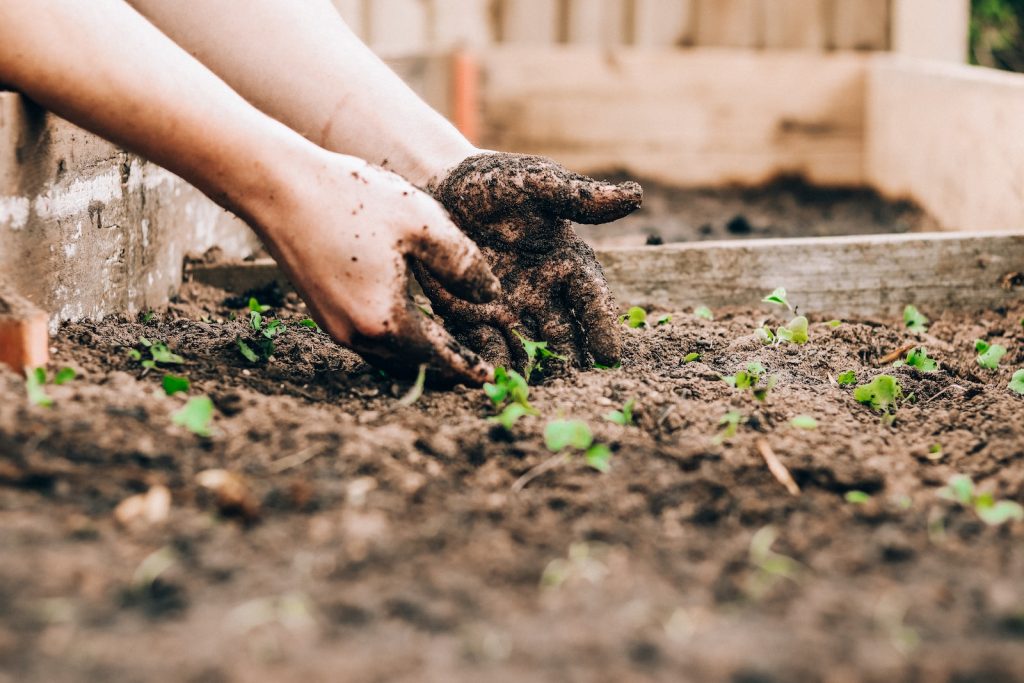Practical studies are a great way to get children excited about a subject. Gardening is a brilliant subject to include in a homeschool – it gets everyone outside, curriculum topics (rocks/soil composition/photosynthesis/etc) can be taught in real life vs worksheets and if everything goes to plan, you’ll eventually be able to eat the results of the school work.
To include gardening as part of a curriculum, you don’t need a huge outdoor space. Vegetables can be grown inside in pots and herbs on a windowsill offer as much material for scientific observation as tomatoes in a garden do. Work with the space you have.

Start with learning about soil
Earthworm Watch is a fantastic place to start. (The data collection for the project is closed but that doesn’t matter – in fact that simply makes it easy to add a maths lesson, studying the data collected.)
Using the education packs on the site, study different types of soil and the impact earthworms have on the quality of the soil. It’s a great activity to take lessons outdoors.
Collect soil samples and look at soil biodiversity – Frontiers is a great place to start.
Use the info here to identify the type of soil in your gardening space
Include a hands-on chemistry lesson, testing the PH of soil using vinegar and bicarbonate of soda.
Plant seeds
Decide what seeds to plant and study the different seeds – how are they different/similar
Task students to draw what they see and to create a seed observation diary.
Make seed watch a part of the homeschool day – noting observations as the seeds grow, watering and caring for the seeds
Make a video time-lapse of the seeds growing from seed to plant
Use the produce you grow!
Home-grown produce is often much more appealing to kids than shop-bought vegetables. They’re excited to try the food they’ve grown and so are more open to trying new things. Experiment with eating raw from the plant, cooking in different ways, looking at different methods for food preservation, and study how the nutritional value of veggies changes according to how we cook it.
(Taste Ed is a great place for lesson prompts regarding nutrition)
Easy Vegetables to grow
Tomatoes, peppers, and cucumbers are easy plants to care for and can be grown in tubs.
Root vegetables like beetroot, carrots, and potatoes again can be grown in pots (and teach patience!)
Herbs are brilliant for quick results
Regrowing vegetables from scraps is a fun project and can be linked to projects exploring sustainability, climate change and food waste.

